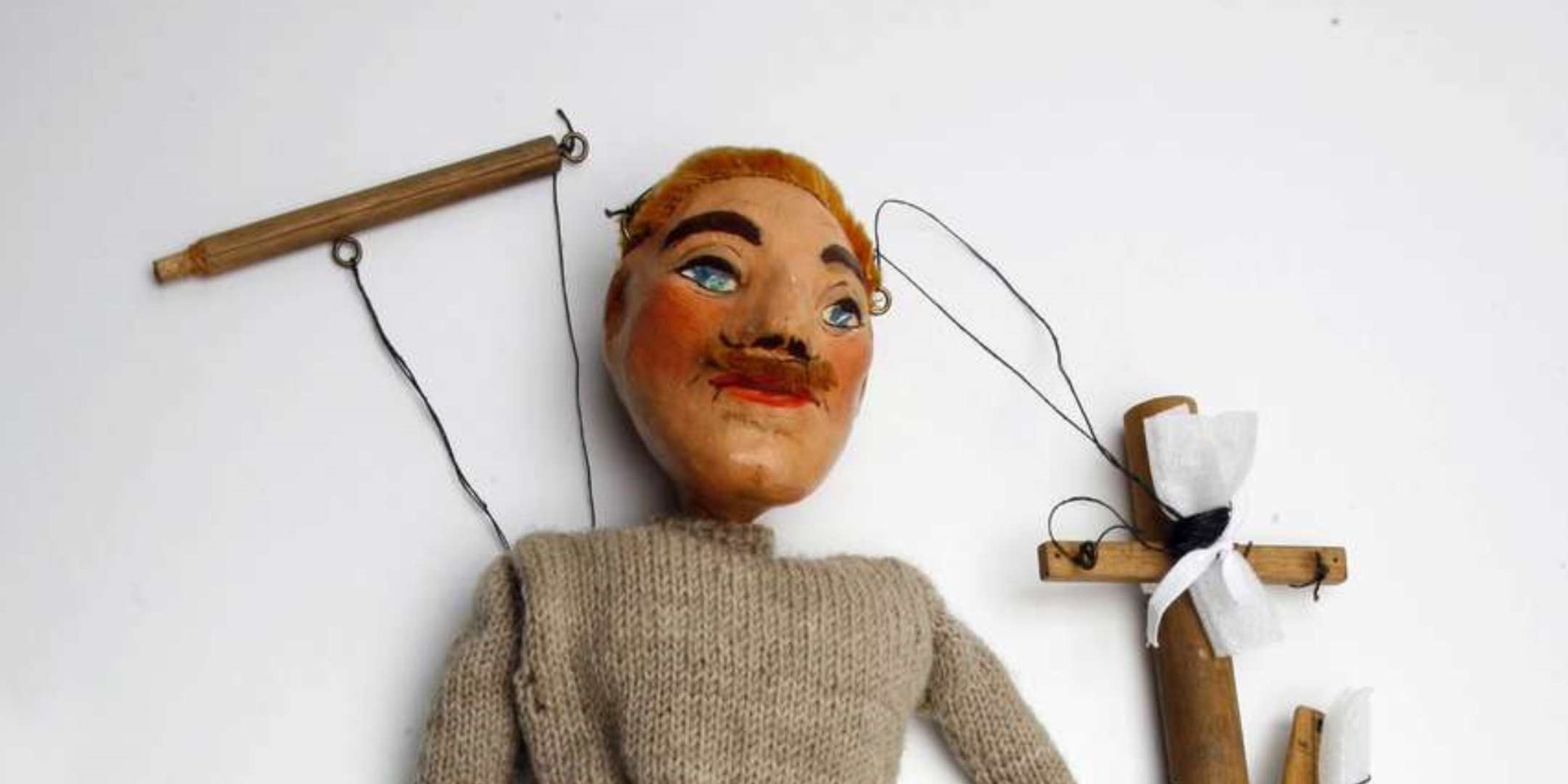
Teaching English, with some helpful puppets
Lois Carrington (nee Griffiths) was a lover of language, she studied Russian, French and Latin at university, her other passion was teaching. It was a natural fit for her to answer the Australian government’s call for teachers to help smooth the transition to Australian life for the influx of post World War II migrants. In 1949, fresh out of university, passionate and with few resources, Lois began her career to teach English 'on the way', aboard migrant ships and at reception centers across Australia.
The Lois Carrington collection offers a personal experience of the government schemes used to facilitate migration. A key tenant of such policies was 'Learning English' and many new teachers, such as Lois, were placed aboard migrant ships to start the migrant’s introduction to Australia during their voyage. Here the teachers were faced with up to 500 students, improvised class rooms on decks and in ballrooms, sea sickness and the greatest challenge: teaching in a classroom where the students spoke a variety of languages.
As a result of the difficulties on board, Lois and her colleagues quickly realised the traditional structure of teaching a language was going to be an uphill battle. Instead of focusing on vocabulary and grammatical rules, they devised 'Situational English' – using props, puppets and films to act out everyday scenes and common interactions.
While watching a Dutch performer at a Bathurst migrant camp, Lois was inspired to incorporate puppets into her teaching methods. Using paper mache and scraps of cloth, she sewed her first Little Guys: three pigs. They would later be joined by a clown, cat, fox and crocodile, among many others. She found puppets lightened the mood of her classes and enabled communication to reach across the cultural and language barriers. The puppets added a touch colour and humour to experience for all involved.
The puppets would mime buying soap at a corner store or how to purchase a railway ticket. Sometimes they would be used to tell children’s fairytales to the showcase repetitive language of nursery rhymes. Eventually, Lois included musical recordings and props from around the camps (such as pastry brushes and straws for blowing bubbles).
Lois would later recall her student’s glee at being able to buy a pound of cherries or purchase a bus ticket when their ships stopped at Perth, their first port of call in Australia. For many of the students, it was their first real chance to face Australia’s monolingual culture. Lois’s diaries from aboard the migrant ship Toscana, highlight the worry of the migrants at the prospect of having no one speak their native languages in their new home.
The transmission of culture flowed both ways: In 1953, Lois secured a position teaching migrants at the General Motors Holden factory at Fisherman’s Bend. Here she created the turban clad puppet Karagheuz, based upon the much loved Turkish folk character. Together, with his sidekick fez wearing tortoise, Karagheuz enacted plots devised by Lois from the comic strips her Turkish Cypriot students showed her.
Lois married George Carrington, a Polish migrant, in 1959. They moved in Papua New Guinea with their children (and Lois’s puppets) in 1968. For the next six years Lois continued to teach English around Papua New Guinea with the help of her trusty puppet troupe. Upon returning to Australia, Lois joined the linguistics department of the Australian National University for 20 years.
Today marks both World Puppetry Day and Harmony Day. While on the surface this coincidence seems like a random quirk of the calendar, both occasions seek to embrace cultural diversity and encourage us share what we have in common. Lois Carrington spent her life using puppets to do just that. The Little Guys were created to bring a sense of inclusiveness, respect and a sense of belonging to all who entered Lois’s classroom.
You can see Gigi the Clown, Lois’s prize marionette, in high resolution and discover other treasures of the collection on our Google Cultural Institute page.











